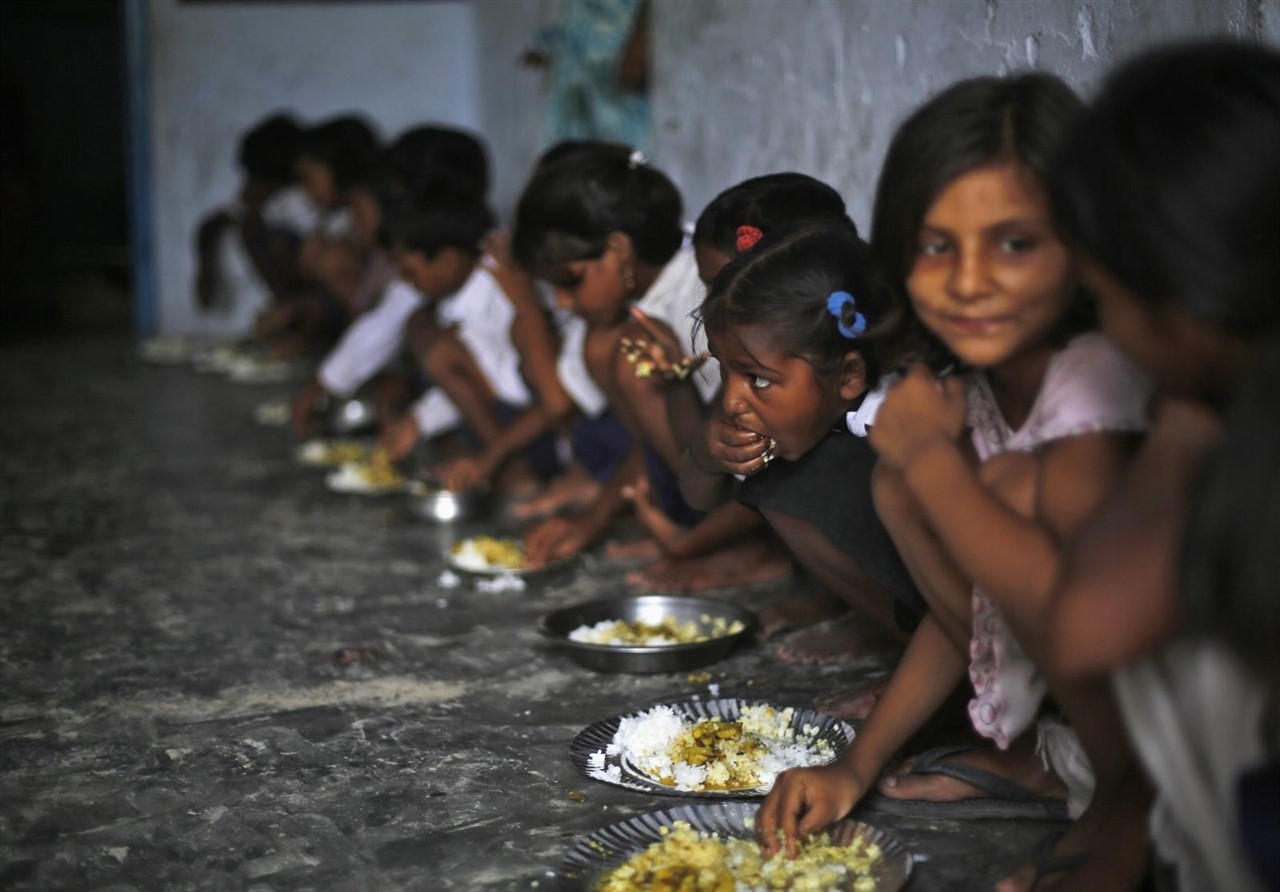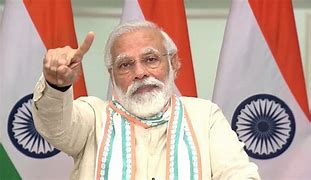Feature
Fewer gains for child nutrition plan in UP, Bihar

India’s flagship programme, Integrated Child Development Services (ICDS), which though showed significant strides, has not benefitted all groups equally, a study said on Thursday, showing fewer gains in high malnutrition states of Uttar Pradesh and Bihar.
Women with low education and the poorest households are relatively more excluded from accessing the programme benefits, said researchers of the International Food Policy Research Institute, who conducted an in-depth analysis of the world’s largest child nutrition programme.
Their main focus was on the historically disadvantaged castes and tribes from 2006 to 2016.
Among states too, while overall utilisation has improved, high malnutrition states are relatively lagging.
The programme provides food, pre-school education, and primary healthcare to children under six and pregnant and lactating women. It continues to be India’s flagship program to tackle undernutrition, and key actions under India’s new nutrition mission, the POSHAN Abhiyaan, are anchored in the programme.
“Even though overall utilisation has improved and reached many marginalised groups such as historically disadvantaged castes and tribes, the poor are still left behind, with lower utilisation and lower expansion throughout the continuum of care,” IFPRI Research Fellow and study co-author Kalyani Raghunathan said.
“These gaps are especially pronounced in the largest states of Uttar Pradesh and Bihar, which also carry the highest burden of under-nutrition. While both states have shown improvements in 2016, they still fall behind national averages, suggesting that overall poor performance in high poverty states could lead to major exclusions.”
“Even in better performing states exclusion of poor could be due to challenges of reaching remote areas, despite attempts to close district-wise equity gaps or local challenges of exclusion within villages due to caste or location-based exclusion,” Raghunathan said in a statement to IANS.
The study, “India’s Integrated Child Development Services programme; equity and extent of coverage in 2006 and 2016”, co-authored by IFPRI’s Raghunathan, Harold Alderman, Purnima Menon and Phuong Nguyen and University of Washington’s Suman Chakrabarti.
It will be published in the April edition of the Bulletin of the World Health Organisation.
Using data from two rounds of the National Family Health Survey conducted in 2005-06 and in 2015-16, the researchers examine equity in programme expansion and factors that determine utilisation.
The study found a dramatic increase in utilisation of ICDS services from 2006 to 2016 in four key areas: supplementary food (9.6 to 37.9 per cent); health and nutrition education (3.2 to 21 per cent); health check-up (4.5 to 28 per cent); and child-specific services (10.4 to 22 per cent).
The frequency of monthly supplementary food for children also increased during this period by eight percentage points.
At the state level, the study highlights an increase in utilisation of ICDS services between the two survey rounds.
With the exception of Tamil Nadu, Chhattisgarh and Jharkhand, the coverage of food supplementation during pregnancy and lactation was less than 25 per cent in most states in 2006 but increased in almost all states by 2016.
The greatest expansion in ICDS services was seen in food supplementation during childhood, which reached more than 50 per cent coverage in the central and southern states of Jharkhand, Madhya Pradesh, Uttaranchal, Tamil Nadu and Andhra Pradesh.
“Given the significant implementation challenges such as state-level implementation decentralisation, population size and diversity, financial constraints and community awareness, the large-scale expansion in ICDS in India is laudable. It seems India is well on its way to scale up at least some key nutrition-specific interventions using ICDS,” said Alderman.
Entertainment
Meghalaya Reserves Legalized Gambling and Sports Betting for Tourists

The State Scores Extra High on Gaming-Friendly Industry Index
Meghalaya scored 92.85 out of 100 possible points in a Gaming Industry Index and proved to be India’s most gaming-friendly state following its recent profound legislation changes over the field allowing land-based and online gaming, including games of chance, under a licensing regime.
The index by the UK India Business Council (UKIBC) uses a scale of 0 to 100 to measure the level of legalisation on gambling and betting achieved by a state based on the scores over a set of seven different games – lottery, horse racing, betting on sports, poker, rummy, casino and fantasy sports
Starting from February last year, Meghalaya became the third state in India’s northeast to legalise gambling and betting after Sikkim and Nagaland. After consultations with the UKIBC, the state proceeded with the adoption of the Meghalaya Regulation of Gaming Act, 2021 and the nullification of the Meghalaya Prevention of Gambling Act, 1970. Subsequently in December, the Meghalaya Regulation of Gaming Rules, 2021 were notified and came into force.
All for the Tourists
The move to legalise and license various forms of offline and online betting and gambling in Meghalaya is aimed at boosting tourism and creating jobs, and altogether raising taxation revenues for the northeastern state. At the same time, the opportunities to bet and gamble legally will be reserved only for tourists and visitors.
“We came out with a Gaming Act and subsequently framed the Regulation of Gaming Rules, 2021. The government will accordingly issue licenses to operate games of skill and chance, both online and offline,” said James P. K. Sangma, Meghalaya State Law and Taxation Minister speaking in the capital city of Shillong. “But the legalized gambling and gaming will only be for tourists and not residents of Meghalaya,” he continued.
To be allowed to play, tourists and people visiting the state for work or business purposes will have to prove their non-resident status by presenting appropriate documents, in a process similar to a bank KYC (Know Your Customer) procedure.
Meghalaya Reaches Out to a Vast Market
With 140 millions of people in India estimated to bet regularly on sports, and a total of 370 million desi bettors around prominent sporting events, as per data from one of the latest reports by Esse N Videri, Meghalaya is set to reach out and take a piece of a vast market.
Estimates on the financial value of India’s sports betting market, combined across all types of offline channels and online sports and cricket predictions and betting platforms, speak about amounts between $130 and $150 billion (roughly between ₹9.7 and ₹11.5 lakh crore).
Andhra Pradesh, Telangana and Delhi are shown to deliver the highest number of bettors and Meghalaya can count on substantial tourists flow from their betting circles. The sports betting communities of Karnataka, Maharashtra, Uttar Pradesh and Haryana are also not to be underestimated.
Among the sports, cricket is most popular, registering 68 percent of the total bet count analyzed by Esse N Videri. Football takes second position with 11 percent of the bets, followed by betting on FIFA at 7 percent and on eCricket at 5 percent. The last position in the Top 5 of popular sports for betting in India is taken by tennis with 3 percent of the bet count.
Local Citizens will Still have Their Teer Betting
Meghalaya residents will still be permitted to participate in teer betting over arrow-shooting results. Teer is a traditional method of gambling, somewhat similar to a lottery draw, and held under the rules of the Meghalaya Regulation of the Game of Arrow Shooting and the Sale of Teer Tickets Act, 2018.
Teer includes bettors wagering on the number of arrows that reach the target which is placed about 50 meters away from a team of 20 archers positioned in a semicircle.
The archers shoot volleys of arrows at the target for ten minutes, and players place their bets choosing a number between 0 and 99 trying to guess the last two digits of the number of arrows that successfully pierce the target.
If, for example, the number of hits is 256, anyone who has bet on 56 wins an amount eight times bigger than their wager.























